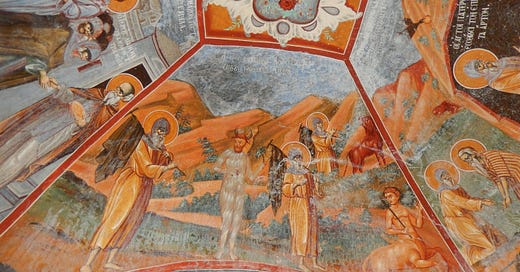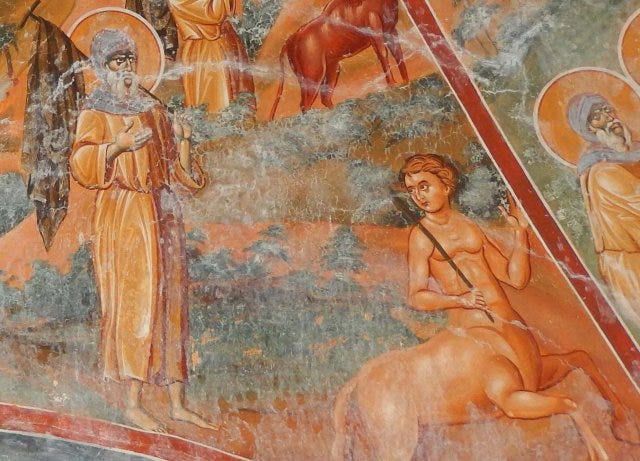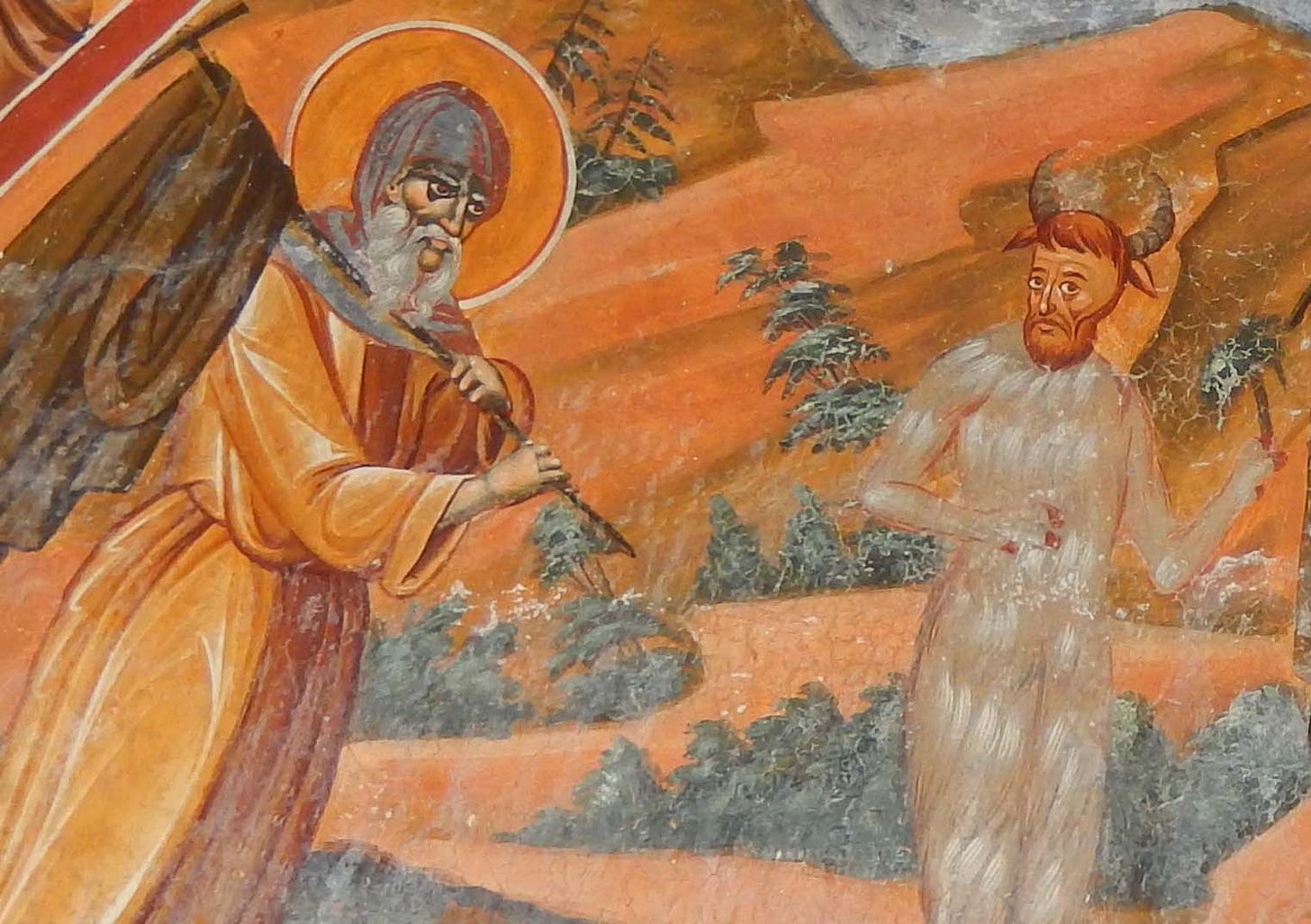JD, you giant gigachad, I hear you say, how are we to reconcile Aliens, Spaceships, and all that mechanistic Science Fiction stuff with Tradition? Isn’t all of that modernist and evil? Are we allowed to believe in other worlds and other men? Didn’t Bruno get burned for that?
Well, the Bruno question is not a simple one, but the tldr for now is simple, we don’t know exactly what heresy he was condemned for, if history recorded it, it has since been lost to the ages. That being said, among his condemned errors was the proposition that the earth is merely one world among many, and that the earth was in no way special.
But, and this is a bit of a big but, as long as we maintain the specialness of the earth as the place of incarnation, of man as the high priest and pinnacle of creation, of the fall, incarnation, death, and resurrection, and all the rest of salvation history, then we should be safe to speculate on other worlds and the inhabitants thereof.
But JD, what inhabitants? Well first of all we can put Men on those other planets. Not other men, but men descended from Adam. We have at a minimum 1600-ish years from Creation to the Flood, plenty of time to develop an antediluvian space empire. Especially, if like in the Legendarium, we posit that the Fall changed the geometry of space and time.
But JD, that’s not fun we want aliens!
OK, OK, keep yer britches on. Aside from the usual identification of Aliens with Demons, which isn’t obviously wrong, given all the accounts of UFO and Abduction phenomena stopping at the Holy Name, I’m sure yall are really asking, ‘what about our fetching green space princesses and proud noble-warrior wolf-men and wicked bug eyed monsters?’
Faeries. Aliens are Faeries.
But JD, how does that follow?
Aside from the ever present space-elves and space-orcs and space-dwarves?
Consider the following, from Saint Jerome’s Life of Paulus the First Hermit.
7. But to return to the point at which I digressed. The blessed Paul had already lived on earth the life of heaven for a hundred and thirteen years, and Antony at the age of ninety was dwelling in another place of solitude (as he himself was wont to declare), when the thought occurred to the latter, that no monk more perfect than himself had settled in the desert. However, in the stillness of the night it was revealed to him that there was farther in the desert a much better man than he, and that he ought to go and visit him. So then at break of day the venerable old man, supporting and guiding his weak limbs with a staff, started to go: but what direction to choose he knew not. Scorching noontide came, with a broiling sun overhead, but still he did not allow himself to be turned from the journey he had begun. Said he, I believe in my God: some time or other He will show me the fellow-servant whom He promised me. He said no more. All at once he beholds a creature of mingled shape, half horse half man, called by the poets Hippocentaur. At the sight of this he arms himself by making on his forehead the sign of salvation, and then exclaims, “Holloa! Where in these parts is a servant of God living”? The monster after gnashing out some kind of outlandish utterance, in words broken rather than spoken through his bristling lips, at length finds a friendly mode of communication, and extending his right hand points out the way desired. Then with swift flight he crosses the spreading plain and vanishes from the sight of his wondering companion. But whether the devil took this shape to terrify him, or whether it be that the desert which is known to abound in monstrous animals engenders that kind of creature also, we cannot decide.
8. Antony was amazed, and thinking over what he had seen went on his way. Before long in a small rocky valley shut in on all sides he sees a mannikin with hooked snout, horned forehead, and extremities like goats' feet. When he saw this, Antony like a good soldier seized the shield of faith and the helmet of hope: the creature none the less began to offer to him the fruit of the palm-trees to support him on his journey and as it were pledges of peace. Antony perceiving this stopped and asked who he was. The answer he received from him was this: “I am a mortal being and one of those inhabitants of the desert whom the Gentiles deluded by various forms of error worship under the names of Fauns, Satyrs, and Incubi. I am sent to represent my tribe. We pray you in our behalf to entreat the favour of your Lord and ours, who, we have learned, came once to save the world, and 'whose sound has gone forth into all the earth.” As he uttered such words as these, the aged traveller's cheeks streamed with tears, the marks of his deep feeling, which he shed in the fullness of his joy. He rejoiced over the Glory of Christ and the destruction of Satan, and marvelling all the while that he could understand the Satyr's language, and striking the ground with his staff, he said, “Woe to you, Alexandria, who instead of God worships monsters! Woe to you, harlot city, into which have flowed together the demons of the whole world! What will you say now? Beasts speak of Christ, and you instead of God worship monsters”. He had not finished speaking when, as if on wings, the wild creature fled away. Let no one scruple to believe this incident; its truth is supported by what took place when Constantine was on the throne, a matter of which the whole world was witness. For a man of that kind was brought alive to Alexandria and shown as a wonderful sight to the people. Afterwards his lifeless body, to prevent its decay through the summer heat, was preserved in salt and brought to Antioch that the Emperor might see it.





The Life of St Columba
The following account is attributed to the year 565 AD
"Concerning a certain water beast driven away by the power of the blessed man's prayer.
Also at another time, when the blessed man was for a lumber of days in the province of the Picts, he had to cross the river Nes [Ness]. When lie reached its bank, he saw a poor fellow being buried by other inhabitants; and the buriers said that, while swimming not long before, he had been seized and most savagely bitten by a water beast. Some men, going to his rescue in a wooden boat, though too late, had put out hooks and caught hold of his wretched corpse. When the blessed man heard this, he ordered notwithstanding that one of his companions should swim out and bring back to him, by sailing, a boat that stood on the opposite bank. Hearing this order of the holy and memorable man, Lugne mocu‑Min obeyed without delay, and putting off his clothes, excepting his tunic, plunged into the water. But the monster, whose appetite had earlier been not so much sated as whetted for prey, lurked in the depth of the river. Feeling the water above disturbed by Lugne's swimming, it suddenly swam up to the surface, and with gaping mouth and with great roaring rushed towards the man swimming in the middle of the stream. While all that were there, barbarians and even the brothers, were struck down with extreme terror, the blessed man, who was watching, raised his holy hand and drew the saving sign of the cross in the empty air; and then, invoking the name of God, he commanded the savage beast, and said: "You will go no further. Do not touch the man; turn back speedily". Then, hearing this command of the saint, the beast, as if pulled back with ropes, fled terrified in swift retreat; although it had before approached so close to Lugne as he swam that there was no more than the length of one short pole between man and beast.Then seeing that the beast had withdrawn and that their fellow- soldier Lugne had returned to them unharmed and safe, in the boat, the brothers with great amazement glorified God in the blessed man. And also the pagan barbarians who were there at the time, impelled by the magnitude of this miracle that they themselves had seen, magnified the God of the Christians."
Another account, pointed out by J. Gratton, relates to an incident while Columba was living on the island of Iona. It may describe an "acid rain" episode including the deposition of fluorine caused by an Icelandic volcanic eruption.
While the saint was living in the island of lo.he saw a heavy rain cloud that had risen from the sea in the north, on a clear day. Watching it as it rose, the saint said to one of his monks "This cloud will be very hurtful to men and beasts; and on this day it will quickly move across and in the evening drop pestiferous rain upon Ireland from the stream that is called Ailbine to Ath‑cliath (Dublin) and it will cause severe and festering sores to form on human bodies and the udders of animals. Men and cattle who suffer from them, afflicted with that poisonous disease will be sick even to death". Following the saint's instruction SiInan arrived, with the Lord's help, at the place aforesaid; and found the people of that district devastated by the pestiferous rain falling upon them from the cloud.'
This account, pointed out by S.A. Thorpe, may have possible relevance to the remarkably dynamic physical properties of Loch Ness.
"On the appointed day as he had intended the Saint came to the long lake of the river Ness, followed by a large crowd. Then the magicians began to exalt, because they saw a great mist brought up, and a stormy adverse wind ... so our Columba, seeing that the elements were being roused to fury against him, called upon Christ the Lord. He entered the boat, and while the sailors hesitated, he himself, more steadfast, ordered the sail to be raised against the wind. When this was done, and with the whole crowd looking on, the ship moved with extraordinary speed, sailing against the contrary wind"
Excellent!